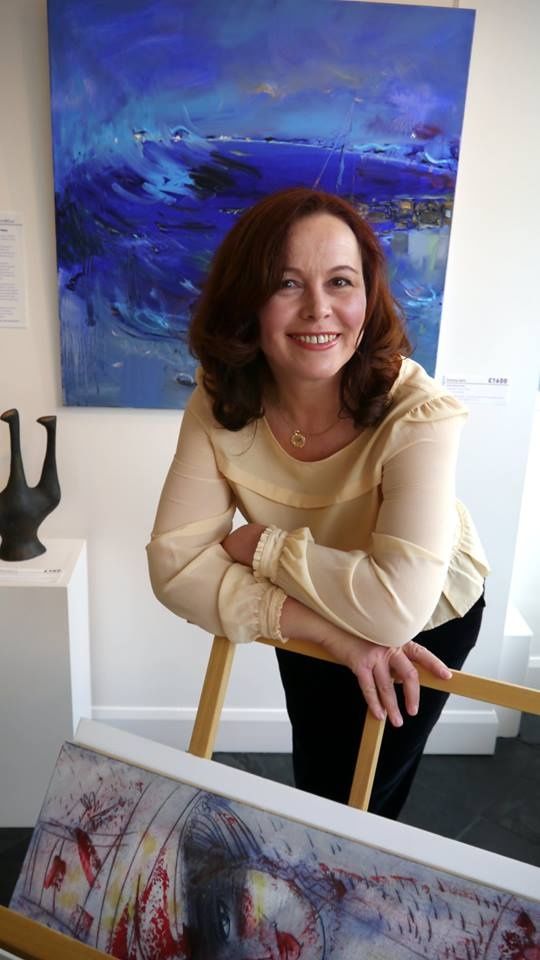Oksana Veber
The Oksana Veber story.
The Oksana Veber story.
The Oksana Veber story.
Oksana Veber is an artist of international reputation and rare distinction. Originally from Barnaul, in the Altaj, above the snow line on the Russian border with Mongolia, China and Kazakhstan, she hails from one of the most politically and geographically isolated corners of the modern world.
Of her childhood she remembers the intense cold, which lasted most of the year. Her grandfather would tunnel through the Siberian snow from the house to reach the street, the stables or the sauna, and she would hollow out ice caves, where she imagined herself as characters from the Tales of Hoffman or Hans Christian Andersen. Summers were spent collecting mushrooms and berries, or feeding the wild 'unicorns' in the forest, as the Siberian Taiga burst into life for a few short weeks before the snow buried the village again.
No sensible person would choose to live in these conditions, and in fact the Vebers are not from Siberia, but from Brandenburg, outside Berlin. During the Russian occupation of Eastern Germany the KGB abducted the entire Veber family to Kosiha in the Siberian Gulag. Oksana's grandparents, Karl and Ida, and Ida's mother Elise, were each sentenced to fourteen years' hard labour, and were released only in 1956 in a regime latterly exposed by Alexander Solzhenitsyn in The Gulag Archipelago. Karl and Ida, on their release, settled nearby in the village of Sosnovka, on the River Ob, where, as former political prisoners and as Germans, they were now ostracized by their neighbours, and soon after Karl was sentenced to another 25 years.
Karl never expected to survive, or see Ida again, and indeed had three more children in the Gulag with another political prisoner. Karl and Ida's two sons, Willy and Rudolph, were also born and raised in the Gulag, yet both were very ambitious, and they now moved to Barnaul in pursuit of higher education. Willy later married Praskovia, from Ukraine, and Oksana was born soon after. At the same time Praskovia's father had died in the war and Praskovia's mother also died giving birth to Praskovia, her thirteenth child. Praskovia's brothers and sisters then raised Praskovia and such was their determination to succeed. that this family of children also moved to Siberia, indeed Barnaul, for the educational and cultural opportunities which were now emerging in the region. Thus the two families finally met.
Oksana was a child prodigy, in the Russian tradition, from the beginning. From a specialist art school at the age of 9, she then went to Bryansk Art College at age 14, where she graduated. As a student she was coerced into working for the KGB, who gave her a diploma on account of her uncanny ability to produce accurate portraits from verbal descriptions of persons of interest. On graduation she was immediately admitted into the Artists' Union of Ukraine, where her professional career instantly took off with monumental commissions for public buildings and state and international institutions, which she managed from conception to completion from the age of nineteen.
Oksana's work is wide ranging, from landscape to portrait to still life, and also includes graphic, fashion and stained glass design. Today she sells in 43 jurisdictions, from Shang Hai to Los Angeles, and she is particularly noted for her signature portraits of ladies in extravagant hats, often bare breasted and surrounded by cats, sailing boats, birds and horses, alongside the resident swans of her beloved Prague. Of these many characters which populate her canvases she says:
'….. the ladies feed the cats and the cats protect the ladies, but all my characters seem to symbolize the pursuit of freedom. I saw my parents coerced by the KGB into joining the Communist Party, for fear of losing their jobs, and I experienced the same rampant corruption myself. The veil which separates us from chaos is very thin and threatens to tear at any moment. Some of my artist friends are in jail in Russia today for their opinions, and when I arrived in the UK, in 2007, for my first exhibition here, I was shocked to hear English friends laugh at politicians, the police and the Royal Family in a manner which is completely unthinkable in the former Soviet Union. Only now did I begin to see that real creative freedom of expression was possible....'
Oksana has known hardship and prejudice only too well and it is surely the quest for freedom that we find distilled and concentrated in her canvasses, both in her subject matter and in her paramount painterly technique. This is her unique contribution and importance as an artist, and her work is surely deserving of the widest possible recognition and acknowledgement in this regard. Oksana's work can be viewed at:
www.veberoksana.com
https://www.facebook.com/veber.oksana.art?ref=hl
Danny Israel in conversation with Oksana Veber.
23 Jan 2015


